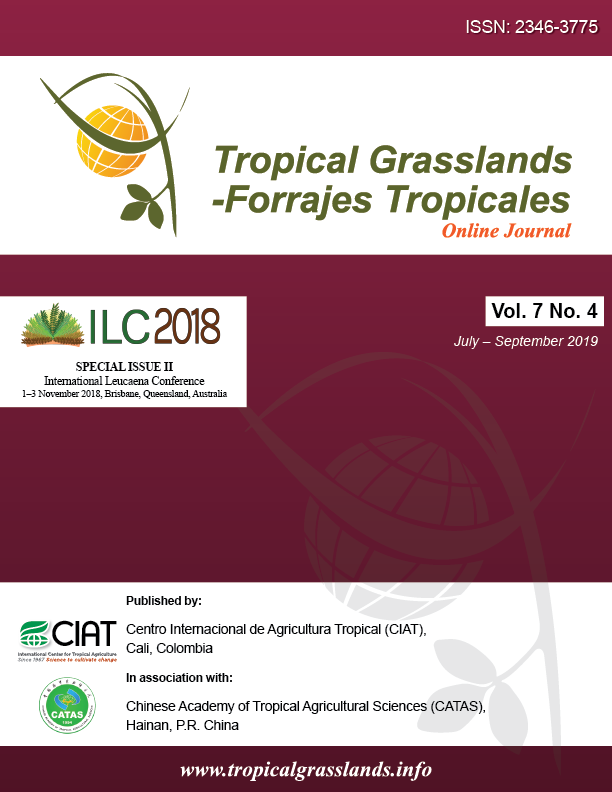Greenhouse gas implications of leucaena-based pastures. Can we develop an emissions reduction methodology for the beef industry?
DOI:
https://doi.org/10.17138/tgft(7)267-272Abstract
Keynote paper presented at the International Leucaena Conference, 1‒3 November 2018, Brisbane, Queensland, Australia.
The perennial legume leucaena (Leucaena leucocephala) is grown across the subtropics for a variety of purposes including livestock fodder. Livestock in Australia emit a significant proportion of the methane produced by the agriculture sector and there is increasing pressure to decrease emissions from beef cattle production systems. In addition to direct productivity gains for livestock, leucaena has been shown to lower enteric methane production, suggesting an opportunity for emissions mitigation and Commonwealth Emissions Reduction Fund (ERF) methodology development, where leucaena browse is adopted for high value beef production. Determining the proportion of leucaena in the diet may be one of the more challenging aspects in attributing mitigation. Current enteric emission relationships for cattle consuming mixed grass-leucaena diets are based on intensive respiration chamber work. Herd-scale methane flux has also been determined using open path laser methodologies and may be used to validate an on-farm herd-scale methodology for leucaena feeding systems. The methodology should also address increased potential for soil organic carbon storage by leucaena grazing systems, and changes in nitrous oxide production. This paper outlines the background, justification, eligibility requirements and potential gaps in research for an emissions quantification protocol that will lead to the adoption of a leucaena methodology by the Australian beef industry. Development of a methodology would be supported by research conducted in Australia.




